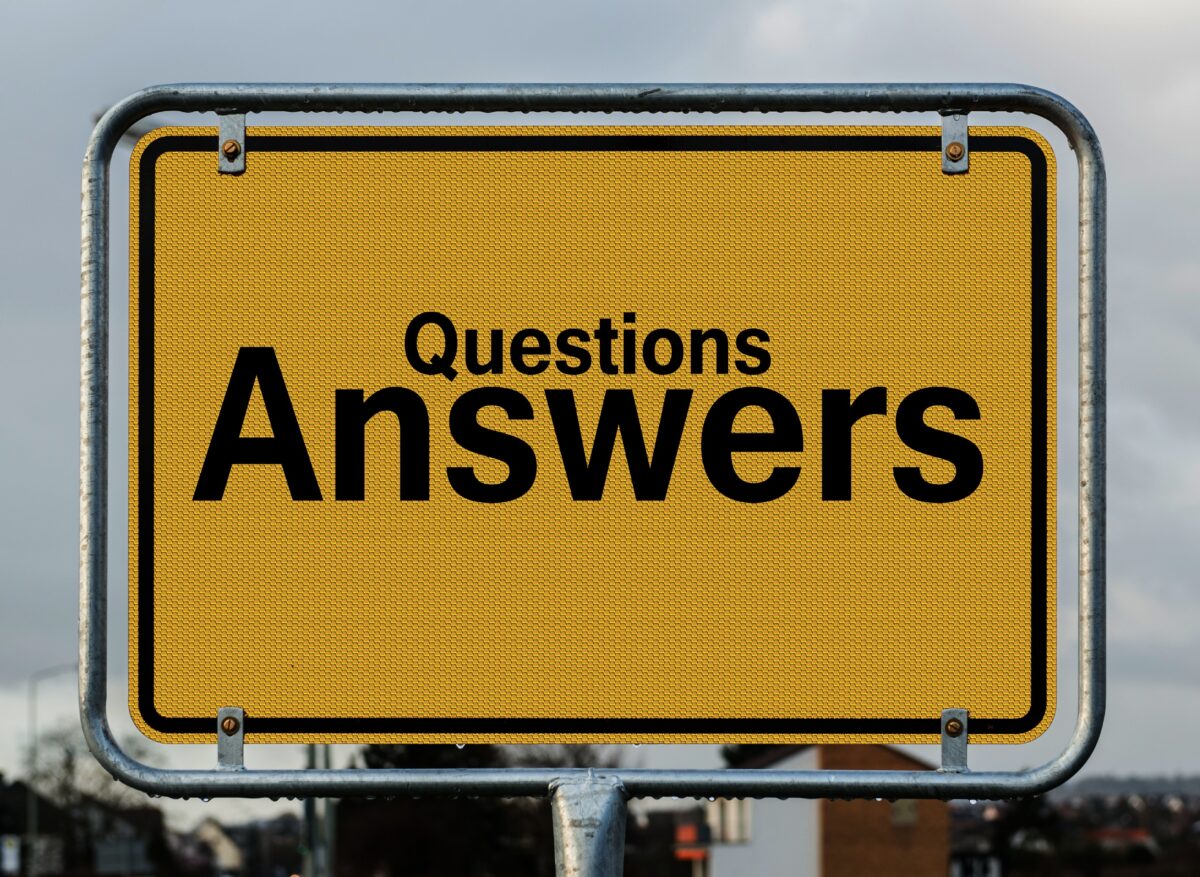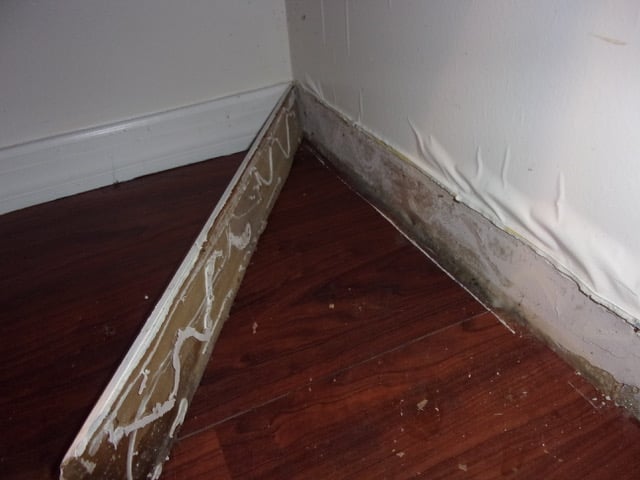Answers to Some Common Mold Questions

IS IT SAFE TO STAY IN A HOME WITH MOLD?”
The best way to answer most mold questions is to check with your family physician. They’re going to know your medical history, the medical history of the people in your house, and what your susceptibilities are. The truth of the matter is most molds will not harm most people and then there’s some molds that will harm anybody and then there’s some people that are affected by any mold.
“WHAT ARE THE DANGERS OF HAVING MOLD IN MY HOME?”
If you have people in the house that are very young (under the age of two) the respiratory system is not fully developed yet. Mold can severely harm these people, and it’s not a good idea for them to be in that environment. The elderly are in a similar situation. If you have someone who is elderly or has lowered immune systems, they also are very susceptible. Then, of course, there’s people with COPD, asthma, or immunodeficiency disorders. Anyone in these categories would be a high risk to mold poisoning. Be sure to check with your family physician.
There are some molds out there that are not very toxic or, in fact, not toxic at all. Then there are some molds that are extremely toxic, so getting some testing upfront might be able to tell you exactly what you’re dealing with and how far into the house the contaminants go. This will let you know whether it’s necessary to actually leave the house or if you can just isolate the space that’s affected until it’s remediated.
“IF I HAVE BLACK MOLD, IS IT NECESSARILY THE VERY TOXIC MOLD YOU SEE ON THE NEWS ALL THE TIME?”
That’s an excellent question and one we get all the time as well. The truth of the matter is that there are literally 100,000 species of mold out there. A lot of them are black and a lot of them are non-toxigenic at all. There are some molds that are extremely toxigenic, and when they talk about toxic black mold on the news, they’re usually referring to “Stachybotrys.” If you’re not familiar with Stachybotrys, that’s actually a good thing for you because it’s very dangerous.
One thing to keep in mind is that just because you have black mold doesn’t mean you have a Stachybotrys. We don’t find Stachybotrys on a regular basis in people’s homes, but we do find it from time to time. The reason why? Stachybotrys takes a long time to grow. It’s not a mold like a Penicillium, Aspergillus, or a Cladosporium that could grow in 24 to 72 hours. Typically, you need at least a couple of weeks of sustained moisture before Stachybotrys grows. Another good thing about Stachybotrys: it tends to be very sticky. It also tends to be much heavier than other molds, so it’s not as easily aerosolized. We typically find Stachybotrys behind the cabinets in the kitchen or behind the wall in a shower that’s been leaking for a long time. So be aware of any signs of sustained moisture.
“DO I NEED TO HAVE THE PROPERTY TESTED OR CAN I JUST HAVE IT REMEDIATED?”
This comes down to two factors. Number one: Are you going to file an insurance claim? And number two: Has the mold been contained to one area or is it suspected to have drafted in other areas?
Are you going to file an insurance claim? According to most insurance companies today, in order for it to be a covered claim for mold, you actually have to prove that it is mold. That is, it can’t just be dirt. As far as they’re concerned, until you prove it’s mold, it’s just some kind of microbial-type substance, and there’s really no proof that mold remediation was necessary. In order to get it covered and to get it paid for by the insurance company, you have to show them that it was mold, and you do that by hiring a third-party industrial hygienist who comes in and does that testing.
“DO I NEED A PROFESSIONAL?”
The great thing about an industrial hygienist coming in and doing the testing is these are people that are experts in their field and can look under a microscope and tell you exactly what type of mold they are looking at and what the levels are. They also have the ability to send it out to a third-party lab to get third-party confirmation of everything that they’re finding. If you’re going to be filing an insurance claim, absolutely 100% get testing every single time, even if it’s just a minor amount.
The second point: Is it suspected that they may have cross-contaminated in other areas of the house? A typical scenario is where a property owner has mold in a bathroom, and they go in there and clean it up themselves. They may be just kicking it up into the air. Typically, right outside the bathroom in the hallway is the AC return, which will pull those mold spores right into the system and distribute them through the house. Also, if moisture has drifted into multiple rooms, or if you have some kind of mold bloom in the property, it’s always a good idea to get testing done.
Testing is not inexpensive. Typically, it starts at about $600 or $800 and kind of goes up from there. However, you’re literally saving yourself money by having testing done. This is because mold remediation can be very expensive, sometimes around $2,000 a room, depending on how much content that you have in there. If you can rule out one or two rooms and save yourself $4,000, the cost of getting that test greatly outweighs the remediation. In short, we highly recommend getting testing done in those two scenarios.
“HOW LONG DOES THE MOLD REMEDIATION TYPICALLY TAKE?”
Answers to these kinds of mold questions tend to vary a lot. We’ve had mold projects on large commercial projects that have taken two or three months. We also have very small projects that we can knock out in a day or so. Typically, we find that most projects take about a week. When you go in initially, you have to remove all damaged materials. When you remove the damaged materials, there’s typically a lot of moisture that’s still there in the framing & structure. You’ll find it in the flooring, subfloor and those types of materials that have to be dried out. Once you bring the materials back to what we call its “dry standard,” then you can actually begin the mold remediation process.
When you’re cleaning the mold through the HEPA filtration cleaning process, that typically takes a couple of days. Then you’ve got a couple of days where you leave HEPA air scrubbers. These clean everything you’ve kicked up in the air. Then on the last day, the hygienist will come back and perform what’s called a “post-remediation verification test,” a PRV test. This process is extremely important, because when we’re doing this cleaning, we’re cleaning microscopic materials. We can’t see them. The process is very tedious, so we’re being very detailed in how we’re actually doing the remediation, but there’s no way to guarantee that we brought the property back to safe levels unless you get the PRV test done by the third-party industrial hygienist. NEVER EVER let a restoration company test their own work. This is extremely important due to the conflict of interests. Always have it done by a third party.
“HOW LONG DOES THIS TAKE?”
Once you finish the demo, you do the actual mold cleaning. At the end, do the test, and you’re looking at about a week-long wait time. Now, does that mean that the remediation company is going to be there from morning till night every day? No, typically, they’re there for a 2-5 hours a day at best. On the last couple of days, the air cleaners are just running. They’ll come by and check to make sure everything’s running okay. Be prepared for that test when their work is complete.
“HOW MUCH DOES MOLD REMEDIATION TYPICALLY COST?”
There are many different factors involved in pricing a mold project, but I would say in a typical home with a typical amount of content, you’re probably looking in the neighborhood of about $2,000 a room. That can be very expensive, and again, that’s the importance of getting that testing done. You need to clearly define the parameters for the cleaning, so we’re not cleaning things we don’t need to. We need to make sure that we are paying specific attention to heavy contaminated areas, and then maybe doing light cleaning in some other areas. These will balance out the cost tremendously.
CALL LIGHTNING RESTORATION
If there is anything that you have questions about, or anything that you want to inquire with Lightning Restoration when it comes to mold removal, water damage, or fire damage, please give us a call. You can reach us at 855-850-LTNG, or you can reach us on the web and leave us a message. Be safe out there.

